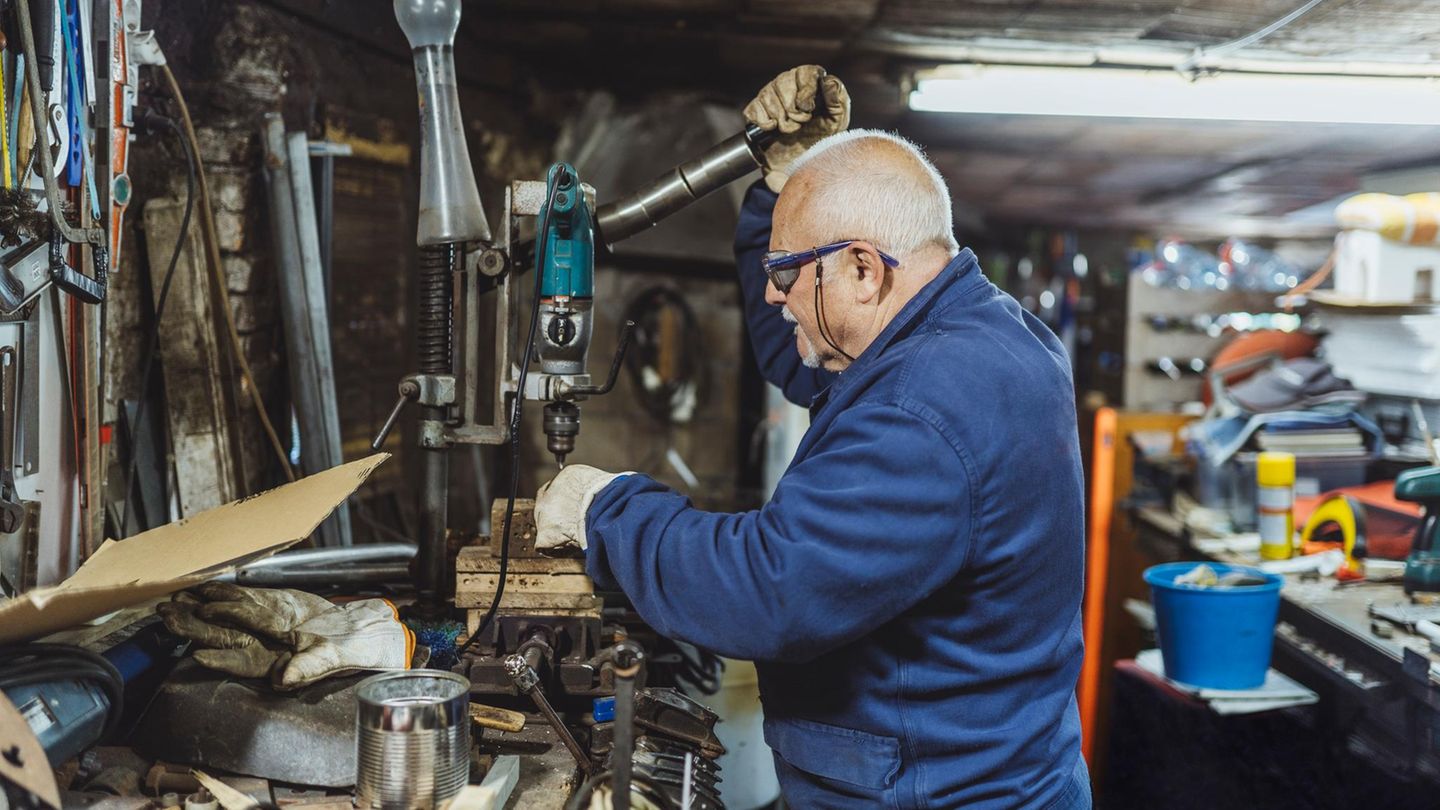It has been ten years since the Norwegian terrorist Anders Behring Breivik killed a total of 77 people in Oslo and on the island of Utøya. The police have learned from their mistakes, the social reappraisal is only now beginning.
“Did July 22nd change Norway?” Kamzy Gunaratnam shakes her head and uses it to move her black locks. “It’s not that easy,” says the 33-year-old firmly. “We made a promise to ourselves: never again July 22nd. We promised each other never to allow such hatred to spread. And we didn’t keep that promise.”
On July 22nd, it will be ten years since Norway experienced the worst act of violence in its history since World War II. The terrorist Anders Behring Breivik detonated a self-made bomb in Oslo’s government district, killing eight people. Then he drove to the island of Utøya, where the youth organization of the Social Democrats (AUF) held their annual camp. He shot the participants at random. In the 92 minutes leading up to his arrest, he took the lives of 69 mostly young people. His youngest victims were 14 years old.
The police in Norway have learned from mistakes
Kamzy Gunaratnam survived. Because she had quickly decided to swim to the mainland. “I thought I had to choose how to die. I’m not good at swimming, but I didn’t mean to be shot either.” Today the young woman with roots in Sri Lanka is the deputy mayor of Oslo. One of its most important goals is the fight against right-wing extremism. “People don’t like to talk about Breivik being a result of Norwegian society,” she says. “We have to ask ourselves how we can prevent July 22nd from repeating itself. That can only be done by preventing what Breivik has created.”
In the years after July 22, 2011, police operations were the main topic of discussion in Norway. There have been too many mishaps that cost lives. The police had no helicopters, no boats, the emergency services could not communicate with each other – and with all this there was only one person in the operations center who had to coordinate two attacks and hundreds of emergency calls. You learned from that. “The Norwegian police force has been increased,” assures Thor Kleppen Séttem, State Secretary in the Ministry of Justice. The standby forces have been reinforced, there are now helicopters, and there is much more practice. In addition, the government buildings in Oslo are now better secured.
Society solidarity was a great comfort
But socially the topic of “July 22nd” was a hot topic for a long time. Almost everyone in Norway knows someone who is affected. “I think Norway as a nation was afraid to touch the subject,” says Lisbeth Røyneland. She leads the group of relatives of the victims. Their daughter Synne died on Utøya. She was found with three shots in the head. “Really executed,” says Røyneland.
The enormous solidarity in society was a great consolation for her at the beginning. Thousands of Norwegians laid roses at the cathedral in central Oslo and walked through the cities in torchlight procession. The words of the then Prime Minister Jens Stoltenberg went down in history: “Our response to violence is even more democracy, even more humanity, but never naivety.”
At first, neighbors and friends came to Lisbeth Røyneland and her family with flowers or something to eat. Then she noticed that acquaintances were crossing the street because they didn’t want to meet her.
Discussion about dealing with Utøya
Among other things, this inability to deal openly with difficult things is what motivates them to call for a broader discussion. “We talk a lot about love and roses, but not very much about the ideas behind the acts of terrorism.” She wants society to keep an eye on the outsiders. “The most dangerous thing that can happen is that a person falls out of society,” says Røyneland. “That forms the breeding ground for conspiracy theories, and that one might be inclined to believe them – and then unfortunately end up like Anders Behring Breivik.”
“Never again July 22nd” is what they say to each other on the island of Utøya in the Tyrifjord, west of Oslo. The island still belongs to the UP. One day after the attack, then chairman Eskil Pedersen said: “We’ll get the island back.” Terror and violence should never win. This announcement was not without controversy.
“There were very different opinions on how to behave towards Utøya,” says Jørgen Wadne Frydnes, who is now the island’s “boss”. For the AUF the island is symbolic, for many parents it was difficult to imagine that the place where their child was murdered should be celebrated again. That led to hard fronts.
At Utøya you learn and get involved – and remember
Wadne Frydnes was commissioned to reconcile the two interests – and he seems to have succeeded. “Today Utøya is a place to remember, a place to learn and a place to get involved,” explains the 36-year-old. The café building, in which 13 young people died, has been partially preserved. The bullet holes can still be seen in the walls. A new building called Hegnhuset was built around it. Its roof is supported by 69 pillars – symbolic of the 69 people who were killed on Utøya. The outside of the building is surrounded by 495 narrow pillars, one for each survivor. School classes come here every day to learn about July 22nd and discuss democratic values.
The relatives and survivors built a memorial for themselves, which is a few hundred meters away in a clearing. A chrome-colored ring hovers between the trees. The names of the dead and their ages are engraved on it. Nobody comes first, nobody last.
For Astrid Willa Eide Hoem this is a very important place. The 26-year-old is now the AUF boss – and she is also a Utøya survivor. She managed to hide under a ledge with others. She had to watch how many were shot in front of her eyes. Also her best friend, with whom she had shared the tent. “When I stand here, I think first and foremost about how young we were, how young they were. 15, 16 years old.” For Astrid this is a memorial that tells something about a very short lived life and a lot about the unlived life. “I still feel the sadness when I think about her. I don’t think you can go through such a terrorist attack without being marked for your life.”
Keeping discussions about right-wing extremism alive
The UP calls loudest for right-wing extremist terror to be discussed more broadly. “They don’t come from a vacuum, they played on the same football field, they are part of our culture. Admitting that he was one of us also means that we now have to correct society,” said the 26-year-old.
Anders Behring Breivik was sentenced to the maximum Norwegian sentence: 21 years imprisonment with subsequent preventive detention. He is isolated in three cells in Skien Prison. To this day he has not regretted his actions, which he justified with a fear of the Islamization of the western world. “I don’t waste any thoughts on him,” says Astrid. “But I am very afraid of people who were inspired by Breivik. And that is what happens.” In 2019, a young Norwegian killed his stepsister and then attacked a mosque near Oslo. “Justified with the same ideology as Breivik,” says Astrid. “A white right-wing extremist who grew up in Norway.”
That is precisely why she and Kamzy Gunaratnam are calling for the discussion to be kept alive. “If Utøya and July 22 are to remain a scar in our collective consciousness, we have to be ready to talk about it, too,” says Gunaratnam. “The whole of Norway has promised: Never again July 22nd. And if we want to keep the promise, then we have to remember what happened.”
David William is a talented author who has made a name for himself in the world of writing. He is a professional author who writes on a wide range of topics, from general interest to opinion news. David is currently working as a writer at 24 hours worlds where he brings his unique perspective and in-depth research to his articles, making them both informative and engaging.




